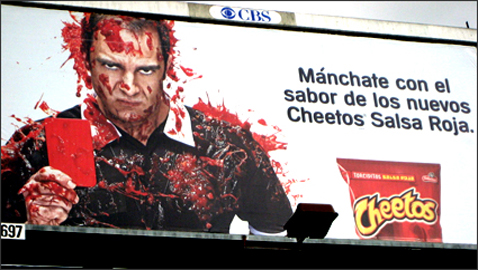Networks Must Portray Latinos In Realistic, Compelling Way: Latino Viewers Will Tune In A Lot More
Post Views 23
English language television executives and advertisers want to appeal to the more than 50 million Latinos in the United States, especially those who can speak the language. However, those viewers are disinclined towards watching English-language programs.
Hispanic experts say, that the networks expectations will continue to be belied unless they adopt the most basic principle of communication: Understand the people you are targeting. The networks will never be able to get the Hispanic population on their side until they stop portraying them in in a formulaic stereotyped and often in a disdainfully pompous manner? Most Latinos females are shown as maids and waitresses.
Esther Cepeda, NBC Latino Contributor has a word of advice for the networks, she says, “…give the maids, bad boys and victimized immigrants a rest. Yes, those are real-life characters, but there’s no reason why art can’t imitate a diversity of life…How about casting Latinos as up-and-coming-politicians, overachieving college students, folksy-vegan-all-organic environmental activists, or the overscheduled suburban soccer mom-slash-superstar mommy blogger?”
Everyone is talking about the huge popularity of Sofia Vergara, a Latino, who is the chief female protagonist on ABC’s “Modern Family” and acknowledging her significant contribution to the attractiveness of the program.
Given that she is not portraying a maid or some similar role, her character is still a contemporary interpretation of what Hollywood expects Latinos to be.
She did earn upwards of $19 million last year, for her role in “Modern Family,” and her endorsement brand value surpassed even Kim Kardashian’s, yet even her presence failed to draw in Latino audiences, who are tired of being characterized and made caricatures of.
When the networks realize that there is a world of Hispanics that are erudite and sophisticated, more demanding and less submitting to racial stereotyping, they will have taken the first positive steps into a world that they desire but one that is not opening out to them.
Networks must make a real effort to comprehend the mental makeup of the ‘fusionistas’ the youthful bi-culturals, who have been born and brought up as Americans and more likely to accept what the network has to offer.
Spanish networks, the language that two-thirds of the US Hispanic populations speak, continue to have a magnetic monopolistic hold over the community. These are the people who migrated from their countries, were born there and still carry with them nostalgic memories of the places. They savour the Spanish networks contents that fuel their passions, music, sports, news that keeps them connected to their respective native areas.
The world of advertising faces similar problems. They enter into it whenever an opportunity arises and they see a business opportunity in the Hispanic market, when it is not available in the general market. It’s always short-term. They do not have cultural insight, they are disbelieving about the worthiness of the investment and sceptical of they will recover it and most importantly lack idealistic commitment.
There is little doubt that the Hispanic market is ripe and ready for plucking. But the networks must realize that they detest stereotype caricaturing and condescending attitudes but will embrace whole-heartedly innovative, novel and uniquely meaningful content.
The networks seeking to enter the Latino market in a big way don’t have to brainstorm too much. It’s strange why they haven’t figured out this simple solution after all these years, given that they are sitting on a goldmine and unable to extract benefits from it. The answer is simple – the Latinos want to see true-to-life characters that reflect the diverse experience of Latinos, not stereotypes.
Networks Must Portray Latinos In Realistic, Compelling Way: Latino Viewers Will Tune In A Lot More by Harrison Barnes


 Fast Food Companies Look to Their Consumers for Advertising
Fast Food Companies Look to Their Consumers for Advertising  Next Level Text Allows Anyone to Fundraise
Next Level Text Allows Anyone to Fundraise  12 Companies That Profit Off Sexual Exploitation
12 Companies That Profit Off Sexual Exploitation  What Really Happens When We Receive Personalized Ads
What Really Happens When We Receive Personalized Ads  Project Gravitas Prepares for Black Friday with ‘Message in a PG Box’
Project Gravitas Prepares for Black Friday with ‘Message in a PG Box’  Advertisers Turn to Outlets Other Than Traditional Television
Advertisers Turn to Outlets Other Than Traditional Television  “Deadzone Diners” Takes a Different Approach to Cellphone Usage
“Deadzone Diners” Takes a Different Approach to Cellphone Usage